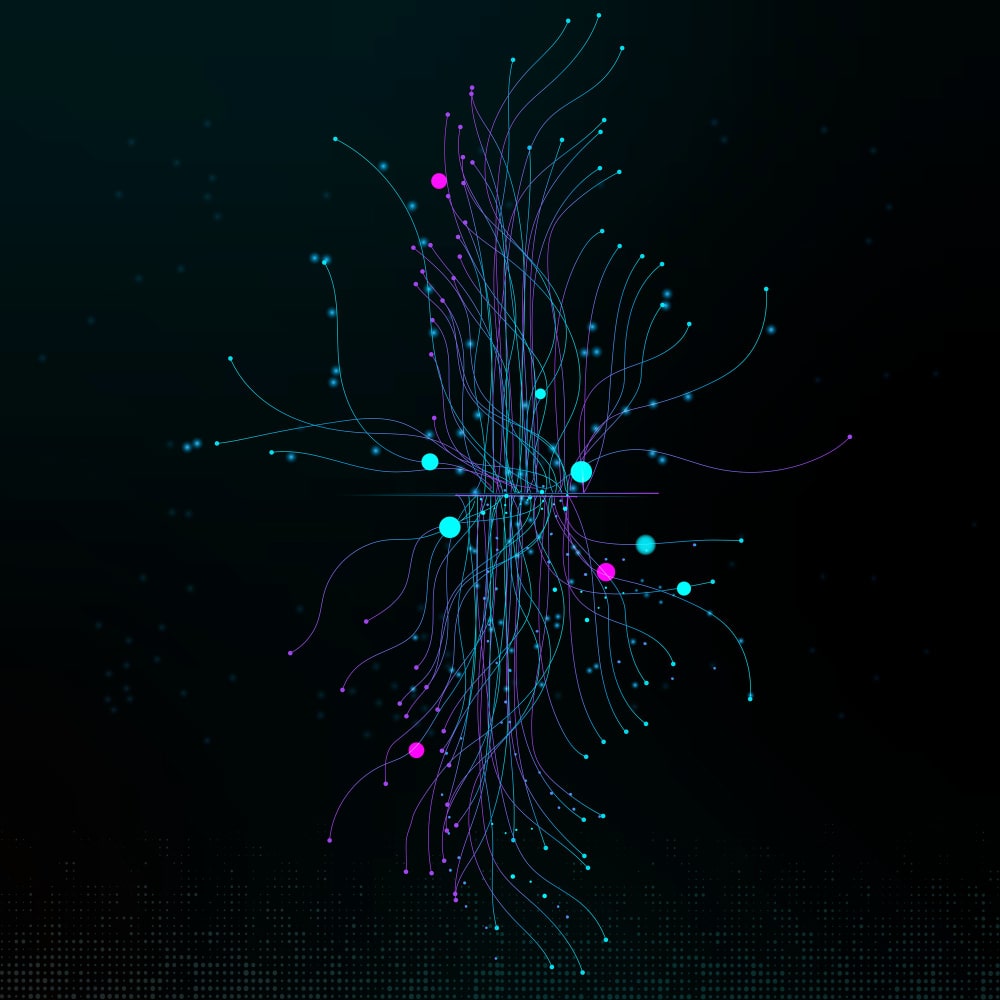Introduction
In the ever-evolving field of nanotechnology, one tiny yet incredibly promising innovation stands out – Quantum Dots. These minuscule particles are revolutionizing industries ranging from electronics to medicine. In this article, we will delve into the fascinating world of quantum dots, exploring their definition, applications, and the revolutionary potential they hold.
Table of Contents
What are Quantum Dots?
Quantum dots, often referred to as QDs, are nanoscale semiconductor particles with unique properties. These tiny structures are typically only a few nanometers in size, making them smaller than the width of a human hair. What sets quantum dots apart is their exceptional ability to manipulate and emit light in a manner that can be precisely controlled.

The Quantum Mechanics Behind Quantum Dots
We need to explore quantum mechanics in order to fully appreciate the wonder of quantum dots. At the subatomic scale, quantum mechanics operates in contrast to classical physics, where particles take predictable paths. This introduces uncertainty and unpredictable behaviors.
When energy excites quantum dots, they display a property known as quantum confinement. As a result, the dot develops discrete energy levels, which produce unique optical characteristics. Tunable emission is made possible by the fact that when these tiny particles are illuminated, they emit light with a wavelength that is directly proportional to their size.
History and Evolution of Quantum Dots
Let’s take a step back and examine the background and development of quantum dots before exploring further into their applications. There is a long and fascinating history behind these remarkable nanomaterials.
The Birth of Quantum Dots
Quantum-dots were first introduced as a concept in the early 1980s. The term “quantum dot” was coined by physicist Louis E. Brus, who began investigating semiconductor nanoparticles. Initially, quantum dots were observed in a glass matrix but were not fully understood or harnessed.
Advancements in Quantum Dot Synthesis
Significant progress was made in the synthesis of quantum dots during the 1990s. Quantum dots’ size and chemical make-up could now be precisely controlled, opening the door to useful applications. A significant advance in display technology resulted from the ability to customize quantum dots to emit particular colors of light.

Nobel Prize For Quantum Dots(2023)
Three American scientists won the Nobel Prize in chemistry for their contributions to quantum dots, which testifies to the revolutionary nature of their work. For their work with the minute particles, Moungi Bawendi of MIT, Louis Brus of Columbia University, and Alexei Ekimov of Nanocrystals Technology Inc. received awards. Smaller than a few atoms in diameter, these particles have uses in electronics and medical imaging as well as the ability to emit extremely bright colored light. According to the Royal Swedish Academy of Sciences, who presented the award in Stockholm, their work has made it possible for quantum dots to “have special properties and now spread their light from television screens and LED lamps.”
Quantum Dots in Displays
One of the key milestones in the evolution of quantum-dots was their integration into displays. In the early 2000s, companies began using quantum dots to enhance the color and efficiency of liquid crystal displays (LCDs). This development marked a major leap in display technology, as quantum dot-enhanced displays offered superior color accuracy and brightness.
Ongoing Research and Innovations
Today, quantum-dots continue to be at the forefront of research and innovation. Scientists are exploring ways to make quantum dots even more efficient, environmentally friendly, and versatile. The field is constantly evolving, with new discoveries and breakthroughs being made regularly.
Applications of Quantum Dots
Quantum dots find applications in a multitude of fields, each harnessing their unique properties for innovation. Let’s explore some of the most exciting applications:
1. Quantum Dot Displays
One of the most well-known applications of quantum-dots is in display technology. QD-enhanced displays offer stunning color accuracy and brightness. These displays are used in high-end televisions and monitors, providing viewers with a captivating visual experience. Quantum dots enhance the color gamut, resulting in vivid and true-to-life colors.

2. Quantum Dot Solar Cells
Quantum-dots are also making waves in the renewable energy sector. Researchers are developing quantum dot solar cells that can efficiently convert sunlight into electricity. The tunable properties of QDs allow for increased energy absorption and improved solar cell efficiency. This promises a greener and more sustainable future.
3. Quantum Dot Imaging
In the world of medicine, quantum-dots have found their niche in imaging techniques. Their ability to emit different colors of light, depending on size, makes them invaluable in tracking and imaging cells and molecules. This has promising implications for early disease detection and personalized medicine. Imagine a future where doctors can diagnose diseases at a molecular level with pinpoint accuracy.
4. Quantum Dot LEDs
Quantum dot LEDs, or QLEDs, are pushing the boundaries of lighting technology. These LEDs emit pure and vibrant colors, making them ideal for applications in high-quality displays and energy-efficient lighting. The exceptional color quality they offer enhances our visual experiences and reduces energy consumption.
5. Quantum Dot Quantum Computing
The future of computing might lie in quantum-dots. Researchers are exploring quantum dot-based quantum computing, where the unique properties of QDs enable the processing of vast amounts of data at speeds unimaginable with classical computers. This could revolutionize industries from cryptography to data analysis.
6. Quantum Dot Drug Delivery
In the pharmaceutical industry, quantum-dots are being used to revolutionize drug delivery systems. Their small size and surface properties allow for precise targeting of specific cells and tissues, minimizing side effects and enhancing the effectiveness of medications.
7. Quantum Dot Environmental Sensors
Quantum-dots are also being employed in the creation of highly sensitive environmental sensors. These sensors can detect pollutants and toxins at incredibly low concentrations, aiding in the protection of our environment and public health.
The Future of Quantum Dots
As we look to the future, the potential of quantum dot seems limitless. Researchers are continually exploring new avenues for these tiny wonders. From quantum dot-based quantum computing to drug delivery systems, the possibilities are boundless. Quantum dots are not just a technology; they represent a gateway to a new era of science and innovation.
Conclusion
In conclusion, quantum-dots are proof of the remarkable progress made in nanotechnology. Their special qualities and adaptability are changing industries and clearing the way for breakthroughs we could previously only imagine. Quantum-dots will undoubtedly be important in determining our future as we continue to unravel the mysteries of quantum mechanics.
FAQs
1. How small are quantum-dots?
Quantum-dots are typically only a few nanometers in size, making them incredibly tiny and nearly invisible to the naked eye.
2. What makes quantum-dot displays superior?
Quantum-dot displays offer superior color accuracy and brightness compared to traditional displays due to their ability to emit precise wavelengths of light.
3. Are quantum-dots safe for medical imaging?
Yes, quantum-dots are considered safe for medical imaging. They are often used to track and visualize cells and molecules in a non-invasive manner, with minimal risk to patients.
4. Can quantum-dots revolutionize the energy sector?
Quantum dot solar cells show great promise in revolutionizing the energy sector by improving solar cell efficiency and energy conversion, potentially reducing our reliance on fossil fuels.
5. How do quantum-dots work in quantum computing?
Quantum-dots in quantum computing take advantage of the unique quantum properties of these particles to perform complex calculations at incredible speeds, offering the potential to solve problems that are currently unsolvable with classical computers.
6. What is the significance of quantum confinement in quantum-dots?
Quantum confinement in quantum-dots leads to discrete energy levels, allowing for tunable emission of light, which is crucial for their applications in various fields.
7. How do quantum-dots benefit drug delivery?
Quantum-dots enable precise drug targeting, minimizing side effects and increasing drug effectiveness, making them a promising technology in the pharmaceutical industry.
8. How can quantum dot sensors protect the environment?
Quantum dot environmental sensors can detect pollutants and toxins at low concentrations, helping monitor and mitigate environmental hazards.

